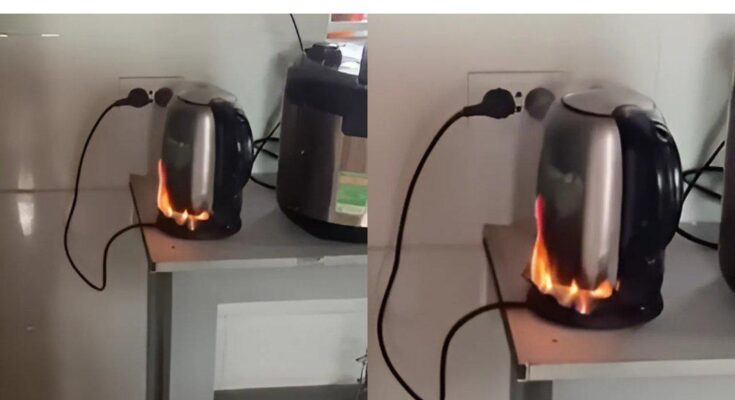While boiling water with an electric kettle is simple and convenient, many people unknowingly make mistakes that can shorten the kettle’s lifespan and even pose health risks.
Electric kettles are widely used in households because of their ease of use—just add water, turn on the switch, and wait a few minutes for boiling water. However, improper use can cause issues. Here are 5 common mistakes that 9 out of 10 households often make:

1. Choosing any type of electric kettle
Many people assume that all electric kettles are the same and opt for the cheapest option as long as it boils water. However, the material of the kettle is crucial.
When buying an electric kettle, it’s best to choose one made from 304 stainless steel. This type of steel is highly resistant to corrosion and heat, ensuring that the boiled water remains safer and free from contaminants.
2. Overfilling the kettle
It’s common for people to fill the kettle to its maximum capacity. However, this habit is risky because the water may overflow while boiling, potentially leaking into the kettle base and causing a short circuit or damage.
To prevent this, always check the maximum water level indicator marked inside the kettle. Never fill water beyond this point to ensure safety and extend the kettle’s lifespan.

3. Turning on the kettle before adding water
Some people mistakenly switch on the kettle before filling it with water. Doing this can put the kettle into a “dry boiling” state, which can damage the heating element.
While a short period of dry boiling might not immediately break the kettle, prolonged or repeated instances will reduce its lifespan and could even lead to a short circuit or electrical failure.
Proper steps for boiling water:
- Add water to the kettle first.
- Place the kettle securely on its base.
- Check that the base is dry and free of water stains.
- Plug in the kettle and switch it on.
Always unplug the kettle after use for safety.

4. Pouring out all the water after boiling
After boiling water, people often pour everything out into a bottle or thermos. However, leaving the kettle completely dry while it is still hot can damage the thermal relay, reducing the kettle’s lifespan.
To avoid this:
- Leave a small amount of water in the kettle after use.
- Before the next use, pour out the remaining water, clean the kettle, and refill it with fresh water.
This practice protects the kettle and ensures it functions properly for longer.

5. Neglecting to clean the kettle regularly
Many households rarely clean their electric kettles, leading to a buildup of yellowish residue (limescale) over time. This buildup not only affects the water quality but may also pose health risks if consumed.
How to clean the kettle:
- Add a mixture of white vinegar and half a bowl of water to the kettle.
- Boil the solution and let it sit for 10 minutes.
- Pour out the water and wipe the inside of the kettle with a clean cloth.
The acidic nature of vinegar effectively dissolves the alkaline residue, leaving the kettle clean and safe for use.
Conclusion
To ensure the safe and long-lasting use of an electric kettle, avoid these common mistakes. Choosing the right kettle, using it properly, and cleaning it regularly can help maintain its performance and protect your health.



